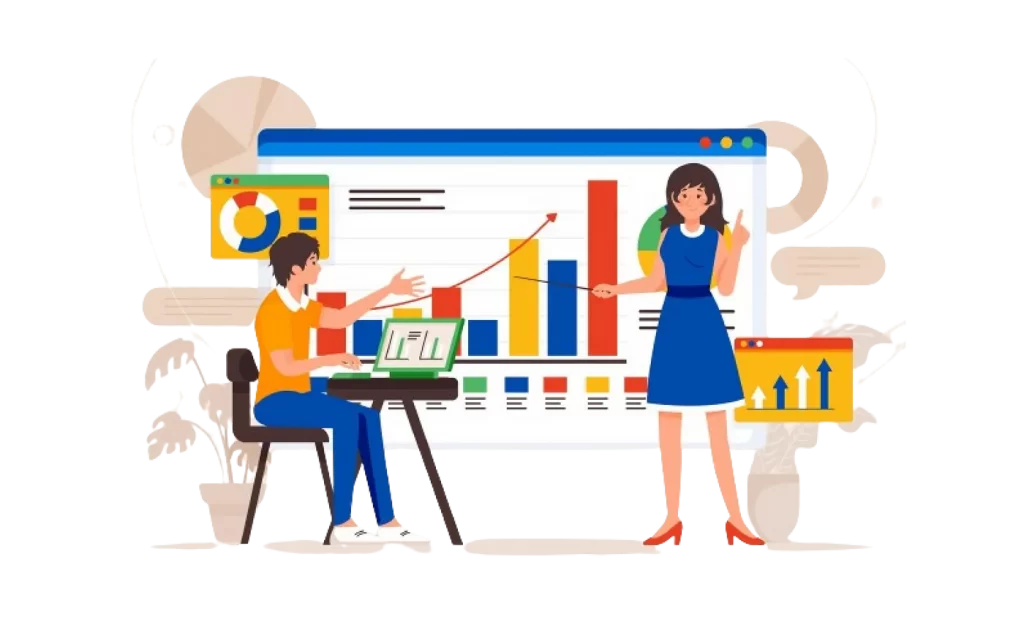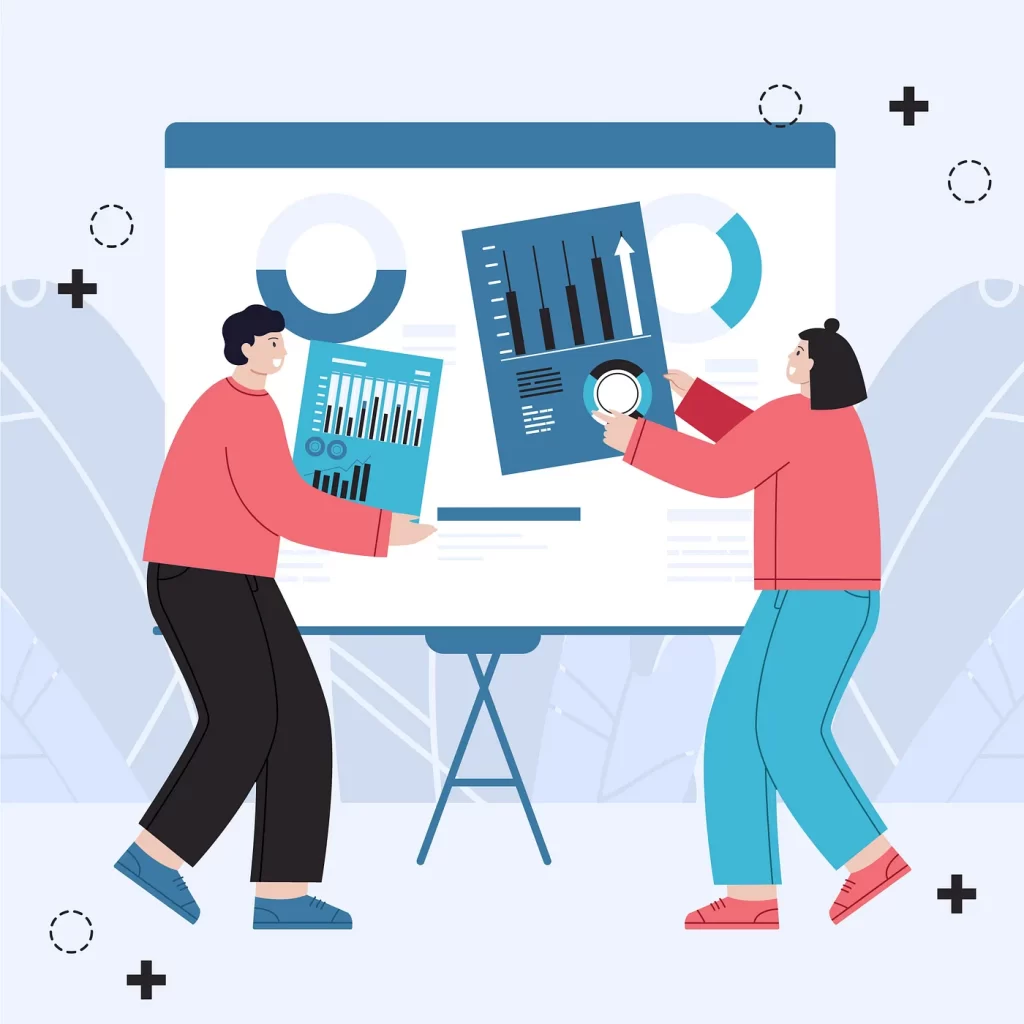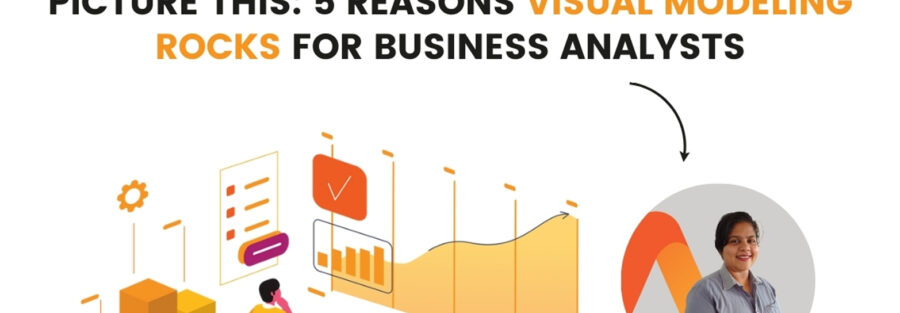By Hasini Adhikari

It would be hard to find anyone who had not heard the saying “A picture can speak thousand words”. What does this mean and why? This is because humans can process an image in mill seconds whereas the reading would require minutes or hours of work. The human brain is more geared towards visual information processing and human attentions span is on average 8 seconds.
This is clearly illustrated with the current rise of Tik-Tok and YouTube/ Instagram reels popularity over any other written media in the modern generation. It is time as Business analyst to get on the bandwagon of becoming “hip” by reclaiming the visual modeling, the unsung hero of the Business Analyst Tool Kits to manage both analysis and communication activities.
As a junior business analyst, I had the opportunity to work in process reengineering projects on multiple occasions. We would have meetings with the customers and users taking notes throughout the business day and come back to the office to convert all the knowledge we gained from the sessions into visual models through the night in preparation for the next day. This was taken as a form of paraphrasing of the customer requirements without which we would be creating long meeting minutes that no one read. However visual modeling allows us to get the verifications we required as well as identify the gaps and issues in the processes we were analyzing. The process was time-consuming and tedious, but at the end of the day, our analysis was completed faster and more accurately. These were the projects that made me a believer in visual modeling over any other method of analysis for Business analysis.
In this article, I will explore five compelling reasons why visual modeling rocks for business analysts and few tricks of the trade on visual modeling.
1. Solidify the Understanding
Visual modeling can be used as a tool for paraphrasing the information we obtain from multiple sources. During the BA phase the information is obtained using multiple sources such as client meetings, document analysis, system study, process documentation, etc. where same information can be repeated and recorded in multiple places. To harmonies the information from multiple sources and organize them visual modeling such as mind mapping and process mapping can be used. This gives you the ability to organize and rework the information easily and present it back to the customer or build questions around them.
2. Facilitate Effective Communication
This is the main reason BAs use visual and think is the only reason for visualization. Presenting a visual model is easier than walking your customer through a 100-page document. Visual models serve as a universal language that transcends barriers, enabling IT business analysts to communicate complex ideas with clarity and precision. Whether presenting to technical teams or non-technical stakeholders, visual modeling bridges the gap between different audiences, fostering meaningful dialogue and collaboration.
3. Fast Track Analysis
As BAs it is essential that we identify issues and define solutions faster so that the software development cycle could start. Time spent on the analysis of the problem is becoming shorter and shorter in projects. Visual model is the tool that can be used in fast tracking the analysis process by harmonizing the information from multiple sources to one view and allowing the BAs to understand the Business processes, and its gaps and issues to define the perfect solution the customer require. Without the visual modeling the gap analyses or issues analysis is impossible unless and otherwise someone spoon-feeds the information to the BA. Even where the visual modeling is not required by the customer, BAs should as a practice work on the visual model of the problems they are handling for the purpose of understanding it and to diagnosis of the issues in the process.
4. Enable Stakeholder Collaboration
As Business Analyst we work with multiple types of stakeholders across the customer business landscape and business functions when it comes to identifying and resolving their issues. These stakeholders are coming to us with their own problems, politics, and agendas and its important as the facilitator to allow them to be heard and come to a consensus on the final solution. The best way to do this is to work with them to define visual models of their problems and subsequent solutions. This is the reason why techniques like “Workshops” are much more effective than just user interviews or document surveys in requirement gathering or solution definition. Where the stakeholders can see the issue or solution Realtime while voicing out their perspective and finally coming to a consensus then as there on the meeting.
5. Enable Easy Requirement Management
When designing an application, the expectation is for it to evolve and grow with the business. As BAs it’s our responsibility to is to facilitate the growth of the application and make sure that the requirements are managed throughout the lifecycle of the application. This is more important when it comes to the development of a product that will evolve over time. Documentation of the requirement needs to be easily updated across the application. The visual model is the only way to facilitate that allows the BAs to start at the helicopter view and dig down to the detail level of the business logic easily. This facilitates the quick learning cycle for any newcomers to the project as well as allows the BAs to update and modify the requirement faster during the operation of the application.
There are a few diagrams that I personally favor and use in my requirement analysis process.

1. Mind mapping: this is an ideal tool when you are working with multiple sources of information. If a document analysis is needed, I prefer to draw the mid map as and when I read though the document, so that I would have the document’s information organized after the first read. Then you can adjust and improve the mind map with the other data sources that get added.
2. Customer Journey Map: this is a great tool when you change the domain or the industry you are working in. Customer journey maps enable you to rapidly identify the key business areas and related applications and allow you to quickly find your place in the company/ industry value chain.
3. Context Diagram: this is the first diagram I would usually draw when coming to a new project, this gives you the understanding of the actors and systems that are interacting with the application and each of their purposes of the interaction. This is the helicopter view of your application.
4. Workflows: Workflows are, when done correctly, the king of all the visualization models. This can be used to identify an existing process or define the new process that the application needs to be built in. Workflows are less technical and allow the freedom to be creative. It also brings out the gaps and issues of a process and diagnoses the problems that need to be solved.
5. Sequence Diagram: this is more of a technical diagram that would be needed in an environment with many systems interacting with one another. This is one of the commonly used tools to identify or define the interaction between multiple parties and how it is facilitated.
6. Status Machine: this is one of the more technical diagrams but perfect where the entities go through multiple statuses that need to be analyzed carefully. This diagram allows the user to easily visualize the status changes, conditions for the status changes and attributes of the status. This can easily identify the gaps in the solution make sure the final solution does not have any loose ends and missed scenarios.
In conclusion, by using the visual modeling we can become better Business Analysts that enhance understanding and enable effective communication to accelerate analysis and fostering stakeholder engagement, visual modeling empowers analysts to deliver impactful solutions that drive business success. By harnessing the power of visual modeling, business analysts can navigate the complexities of IT projects with confidence and clarity, paving the way for innovation and excellence. So, the next time you’re faced with a challenging project, remember to “picture it”.




